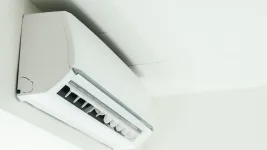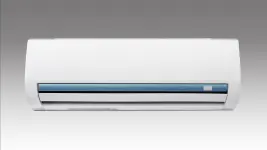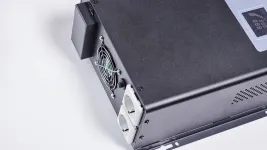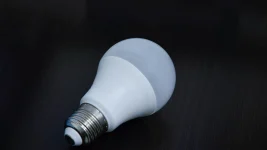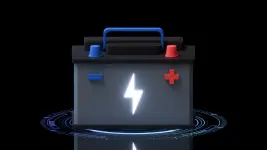10 Best AC Brands in India [August, 2024]
As the hot summer months approach, a reliable and efficient air conditioner becomes a must-have for many of us. With so many AC brands on the market, each touting its superiority, selecting the right one can be a daunting task. In this comprehensive guide, we’ll delve into the world of air conditioners, examining the top brands, their key features, and crucial factors to consider when making your purchase decision. Whether you’re looking for the perfect AC for your home or office, this article will provide you with all the information you need to make an informed and confident choice.
/ IN THIS ARTICLE [ hide ]
Top 10 Best AC Brands in India
1. Daikin
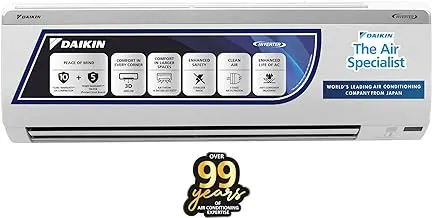
Daikin is a respected Japanese brand that has built a reputation for its innovative technology and high-performance air conditioners. Their air conditioners are designed to deliver exceptional cooling performance while minimizing energy consumption.
Daikin’s inverter ACs stand out for their impressive cooling capabilities, whisper-quiet operation, and significant energy savings. Although Daikin ACs may come with a higher price tag, they offer long-lasting durability and exceptional after-sales support.
Key benefits:
- Powerful cooling performance
- Low maintenance requirements
- Durable construction
- Energy-efficient models available
Potential drawbacks:
- Premium pricing
- Limited model range
2. LG
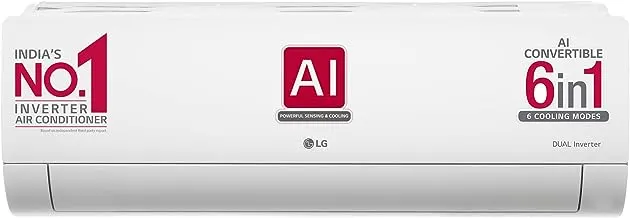
LG is a leading South Korean electronics company that has established itself as a major player in the air conditioning industry. Their air conditioners boast innovative features such as dual inverter compressors, which enable faster cooling and improved energy efficiency.
LG’s ACs are renowned for their sleek designs, intuitive interfaces, and smart features that enhance the user experience. The brand is also committed to providing exceptional after-sales service, ensuring customer satisfaction and peace of mind.
Key advantages:
- Cutting-edge technology
- Energy-efficient 5-star models
- Excellent performance
Potential drawbacks:
- Premium pricing
- Room for improvement in after-sales service
3. Voltas
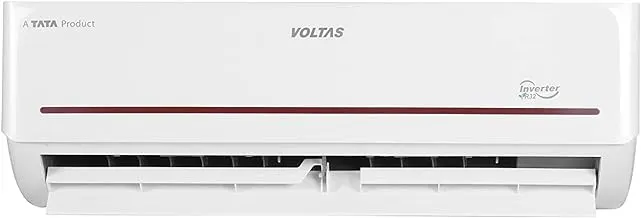
Voltas is a well-established Indian brand that has earned a reputation for providing reliable and affordable air conditioning solutions. With a wide range of energy-efficient ACs, Voltas has successfully captured a significant share of the market.
Voltas’ ACs are designed to withstand the intense Indian summers, delivering reliable cooling performance that customers can count on. The brand offers a diverse portfolio of models across various price points, making its products accessible to a broad customer base.
Key benefits:
- Affordable pricing options
- Good energy efficiency
- Decent cooling performance
Potential drawbacks:
- Some areas have reported complaints about after-sales service
4. Blue Star

Blue Star is a prominent Indian brand that has built a reputation for delivering high-performance air conditioners with cutting-edge features. The brand is committed to investing in research and development to create products that specifically cater to the unique needs of Indian consumers.
Blue Star’s ACs are renowned for their exceptional cooling capabilities, even in large rooms, and their robust build quality. The brand has an extensive service network across India, ensuring prompt and reliable after-sales support.
Key advantages:
- Excellent cooling performance
- Energy-efficient inverter ACs
Potential drawbacks:
- Premium pricing for some models
- Average after-sales service experience
5. Carrier

Carrier is a renowned US-based air conditioning brand that has established a strong presence in the Indian market. The brand is recognized for its premium air conditioners that deliver exceptional cooling performance and cutting-edge features.
Carrier’s ACs are designed to provide unparalleled comfort and convenience, featuring innovative technologies such as Wi-Fi connectivity and voice control integration. Although Carrier ACs are priced at the higher end of the spectrum, they offer uncompromising quality and durability.
Key benefits:
- Excellent cooling performance
- Innovative technology
Potential drawbacks:
- Very expensive
- Limited availability in certain regions
6. Godrej

Godrej is a prominent Indian brand that has built a reputation for delivering high-quality air conditioners, characterized by their exceptional air throw and cooling retention capabilities.
Key benefits:
- Excellent air throw
- Consistent performance
- Affordable pricing options
Potential drawbacks:
- Limited advanced features compared to other brands
- Average after-sales service experience
7. Hitachi
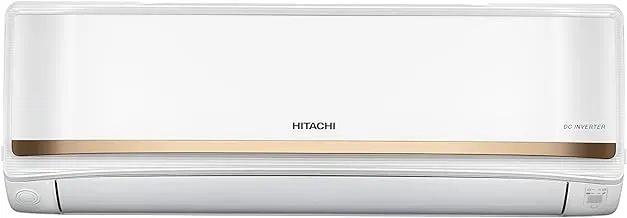
Hitachi is a renowned brand that has built a reputation for delivering air conditioners that provide swift and efficient cooling with minimal noise disturbance. The brand is committed to incorporating cutting-edge Japanese technology and innovation into its products.
Key advantages:
- Excellent cooling performance
- Low noise levels
- Suitable for large spaces
Potential drawbacks:
- Premium pricing
- Poor after-sales service in some regions
8. Lloyd

Lloyd is a rapidly growing Indian brand that has made a name for itself by offering feature-rich air conditioners that prioritize energy efficiency.
Key benefits:
- Feature-rich models with advanced technologies
- Good value for money
- Attractive and modern designs
Potential drawbacks:
- Average after-sales service experience
- Smaller distribution network compared to other brands
9. Samsung

Samsung is a renowned brand that has introduced innovative and smart air conditioners equipped with cutting-edge features. As a premium brand in India, Samsung’s ACs are highly sought after for their futuristic designs and advanced technologies.
Key advantages:
- Futuristic and smart AC models
- Excellent features and technologies
Potential drawbacks:
- Very expensive pricing
- Effectiveness of wind-free technology is debatable
10. Panasonic

Panasonic is a well-known brand that has introduced technologically advanced air conditioners, leveraging premium Japanese technology to provide clean and refreshing air.
Key benefits:
- Excellent air purification capabilities
- WiFi connectivity for seamless control
- Premium features and technologies
Potential drawbacks:
- Very expensive pricing
- Limited regional service centers, which may impact after-sales support
Comparison of Best AC Brand in India
| Brand | Key Features | Pros |
|---|---|---|
| Daikin | Inverter compressor, copper condenser, adjustable modes, PM 2.5 filter | Excellent cooling, low noise, energy efficient |
| LG | Dual inverter, convertible modes, WiFi control, HD filters | Great performance, energy savings, smart controls |
| Voltas | Adjustable modes, anti-dust filters, WiFi enabled, stabilizer free | Good value for money, decent cooling, easy maintenance |
| Blue Star | Turbo cooling, self-diagnosis, custom modes, dust filters | Powerful cooling, sturdy build quality |
| Carrier | Flexicool technology, auto cleanser, cold plasma filter | Excellent cooling, innovative technology |
| Godrej | I-Sense technology, 5-in-1 modes, anti-dust filter | Excellent air throw, consistent performance, affordable |
| Hitachi | Fast cooling, expandable inverter compressor, Koukin filter | Excellent cooling, low noise, good for large rooms |
| Lloyd | 5-in-1 modes, anti-viral filters, energy efficiency | Feature rich models, good value for money |
| Samsung | Wind-free cooling, WiFi enabled, 5-in-1 modes | Futuristic and smart models, excellent features |
| Panasonic | 7-in-1 modes, 4-way swing, PM 2.5 filters | Excellent air purification, premium features |
Choosing the Right Air Conditioner Capacity for Your Room
When selecting an air conditioner, it’s essential to consider the room’s size and the AC’s cooling capacity, measured in British Thermal Units (BTUs) per hour. Here’s a general guide to help you choose the right AC capacity for your room:
- Measure the room’s square footage by multiplying the length and width of the room. 2. Use the following chart to determine the appropriate BTU capacity based on the room size:
Room Size Recommended BTU Capacity
| Room Size | Recommended BTU Capacity |
|---|---|
| Up to 150 sq. ft | 5,000 BTUs |
| 150-250 sq. ft | 6,000 BTUs |
| 250-300 sq. ft | 7,000 BTUs |
| 300-350 sq. ft | 8,000 BTUs |
| 350-400 sq. ft | 9,000 BTUs |
| 400-450 sq. ft | 10,000 BTUs |
| 450-550 sq. ft | 12,000 BTUs |
| 550-700 sq. ft | 14,000 BTUs |
| 700-1,000 sq. ft | 18,000 BTUs |
| 1,000-1,200 sq. ft | 21,000 BTUs |
| 1,200-1,400 sq. ft | 23,000 BTUs |
| 1,400-1,500 sq. ft | 24,000 BTUs |
| 1,500-2,000 sq. ft | 30,000 BTUs |
| 2,000-2,500 sq. ft | 34,000 BTUs |
Consider the following factors that may influence the required capacity:
- High ceilings: Increase capacity by 10%.
- Heavily shaded rooms: Reduce capacity by 10%.
- Very sunny rooms: Increase capacity by 10%.
- Rooms occupied by more than two people: Add 600 BTUs per additional person.
- Kitchen AC units: Increase capacity by 4,000 BTUs.
Remember, this is a general guide, and it’s always best to consult with a professional HVAC expert to determine the most suitable AC unit for your specific needs and space.
What is BTU and How Does it Impact Cooling Efficiency?
BTU stands for British Thermal Unit, a unit of measurement for energy. In the context of air conditioning, BTUs measure the cooling capacity of an AC unit, or the amount of heat it can remove from a space in one hour. The higher the BTU rating of an air conditioner, the greater its cooling capacity.
However, BTU rating alone does not guarantee better cooling efficiency. Cooling efficiency is determined by how effectively the AC unit can remove heat from a space while consuming the least amount of energy. Several factors influence cooling efficiency:
- Proper Sizing: An AC unit that is too small for a room will work harder and run continuously, while an oversized unit will cycle on and off frequently, leading to energy waste and inadequate humidity control.
- Energy Efficiency Ratio (EER): This measures how efficiently an AC unit uses energy to cool a space. A higher EER rating indicates better energy efficiency.
- Seasonal Energy Efficiency Ratio (SEER): Similar to EER, SEER measures an AC unit’s efficiency over an entire cooling season. A higher SEER rating means better energy efficiency.
- Maintenance: Regular maintenance, such as cleaning filters and coils, ensures the AC unit operates at its optimal efficiency.
- Installation: Proper installation, including adequate insulation and sealing, significantly impacts the cooling efficiency of an AC unit.
In summary, while BTUs measure an air conditioner’s cooling capacity, several other factors contribute to its overall cooling efficiency. Choosing an AC unit with the appropriate BTU rating for your room size and considering energy efficiency ratings, proper maintenance, and installation are all crucial for achieving optimal cooling performance.
Understanding the BEE Star Rating System for Air Conditioners
The BEE (Bureau of Energy Efficiency) star rating system is a government-backed energy efficiency rating system for electrical appliances in India, including air conditioners (ACs). The system assigns a star rating to appliances based on their energy efficiency, with a higher number of stars indicating better energy efficiency and potential energy savings.
For air conditioners, the star rating is based on the ISEER (Indian Seasonal Energy Efficiency Ratio) value. ISEER is a ratio of the total annual amount of heat that the AC can remove from the indoor air when operated for cooling in active mode to the total annual amount of energy consumed by the appliance during the same period.
Here’s a breakdown of the BEE star rating system for ACs:
| Star Rating | ISEER Value |
|---|---|
| 1 Star | < 3.1 |
| 2 Star | 3.1 ≤ ISEER < 3.3 |
| 3 Star | 3.3 ≤ ISEER < 3.5 |
| 4 Star | 3.5 ≤ ISEER < 4.0 |
| 5 Star | ISEER ≥ 4.0 |
Note that the BEE periodically revises the star rating criteria to encourage manufacturers to improve energy efficiency. As a result, a 5-star rated AC in 2018 might not meet the same criteria for a 5-star rating in 2021 or later.
Benefits of choosing a higher BEE star-rated AC:
- Energy savings: Higher star-rated ACs consume less energy, leading to lower electricity bills.
- Reduced environmental impact: By consuming less energy, higher star-rated ACs contribute to lower greenhouse gas emissions.
- Government incentives: Some state governments in India offer incentives, such as reduced taxes or subsidies, for purchasing higher star-rated appliances.
When purchasing an AC, it is essential to consider the BEE star rating along with other factors such as the AC’s cooling capacity, features, and price to make an informed decision that balances energy efficiency and your specific cooling needs.
How to Choose the Best AC Brand in India
- Reliability and Brand Reputation: Investing in a reliable AC brand ensures that you get a quality product that will serve you well for years to come. Look for brands with a strong reputation for durability, customer satisfaction, and after-sales service. Leading brands like Daikin, LG, Voltas, and Blue Star have built a name for themselves by consistently delivering high-quality air conditioners and excellent customer support.
- Price and Warranty: AC prices can vary significantly based on brand, capacity, energy efficiency, and features. Set a budget based on your requirements and look for the best value-for-money option. Additionally, consider the warranty offered by the manufacturer. Most reputable brands provide comprehensive warranties on the compressor and other parts, giving you peace of mind.
Types of Air Conditioners: Pros and Cons
When it comes to choosing the right air conditioner for your needs, it’s essential to consider the pros and cons of each type. Here’s a breakdown of the advantages and disadvantages of the most common AC types:
Window ACs
Pros:
- Easy to install and relatively affordable
- Suitable for small to medium-sized rooms
- No additional ductwork required
Cons:
- Can be noisy
- Blocks a portion of the window view
- Limited cooling capacity compared to other types
Split ACs
Pros:
- Quiet operation due to separate indoor and outdoor units
- More aesthetically pleasing than window ACs
- Suitable for larger rooms or multiple rooms
- Higher energy efficiency compared to window ACs
Cons:
- Higher initial cost compared to window ACs
- Requires professional installation
- Outdoor unit requires space and can be visually obtrusive
Central ACs
Pros:
- Can cool an entire house or building
- Even cooling distribution through ductwork
- Quiet operation as the main unit is located outside
- Can be integrated with a heating system
Cons:
- High initial cost for installation and equipment
- Requires extensive ductwork, which may not be feasible in some homes
- Requires regular maintenance and cleaning of ducts
Portable ACs
Pros:
- Easy to move from one room to another
- No permanent installation required
- Suitable for renters or those who can’t install window or split ACs
Cons:
- Limited cooling capacity compared to other types
- Noisier than split or central ACs
- Requires a window or vent for the exhaust hose
- Less energy-efficient than other types
Geothermal ACs
Pros:
- High energy efficiency as it uses the stable temperature of the earth
- Can provide both heating and cooling
- Long lifespan and low maintenance
Cons:
- Very high initial cost for installation
- Requires a suitable land area for the underground piping
- Installation can be disruptive to landscaping
When choosing the right air conditioner for your needs, it’s essential to weigh the pros and cons of each type to ensure you make the best decision for your specific situation.
Optimizing Your Air Conditioner’s Performance: Tips for Usage and Maintenance
To get the most out of your air conditioner and extend its lifespan, follow these essential usage and maintenance tips:
Regular Cleaning: Clean your AC filters every 2-3 weeks to maintain efficient airflow and prevent dust buildup. Dirty filters can lead to reduced cooling performance and higher energy consumption.
Annual Servicing: Schedule a professional AC service before the start of summer to ensure your unit is in top working condition. Regular servicing helps identify and fix potential issues, improving the AC’s performance and lifespan.
Temperature Setting: Set your AC temperature between 24-26°C for optimal comfort and energy efficiency. Every degree below 24°C can increase energy consumption by 6%.
Proper Installation: Ensure your AC is installed correctly, with the outdoor unit placed in a well-ventilated area, away from direct sunlight. Improper installation can lead to reduced cooling efficiency and higher energy bills.
Insulation: Seal any gaps or cracks around doors and windows to prevent cool air from escaping and hot air from entering the room. Proper insulation helps maintain a consistent temperature and reduces the AC’s workload.
Timer Function: Use your AC’s timer function to automate the on/off cycles based on your daily routine. This helps save energy and ensures the room is cooled only when needed.
Air Circulation: Ensure proper air circulation by keeping furniture and curtains away from the AC’s airflow path. Good air circulation helps distribute cool air evenly throughout the room.
By following these simple tips, you can optimize your air conditioner’s performance, reduce energy consumption, and extend its lifespan.
FAQs about Best AC Brand in India
Q. Is an inverter AC better than non-inverter AC?
Yes, Inverter ACs are more energy efficient and provide comfortable temperature consistently compared to fixed speed non-inverter ACs. They adjust cooling based on heat load.
Q. Which AC brand is best for long term usage?
Daikin and LG are considered the best AC brands for long term usage due to their reliable compressors, durable build quality and good after sales service.
Q. What is the oldest AC company?
Carrier is the world’s oldest air conditioner company founded in 1915 in the USA. It pioneered AC technology and introduced innovative models. In India, Voltas introduced ACs in 1954 and is among the oldest companies.
Q. Who is the biggest manufacturer of AC?
At the global level, the biggest AC manufacturer is Daikin Industries from Japan. In the Indian market, Voltas currently has the highest market share followed by LG, Daikin, Blue Star etc.
Q. Which is the first AC brand in India?
Voltas launched air conditioners in India in the 1950s and is considered the first Indian brand to manufacture and sell ACs locally.
Q. Which company AC is costly in India?
Carrier ACs are among the most expensive AC brands in India with prices ranging from ₹35,000 to ₹55,000 for premium models. Daikin, Mitsubishi Electric and Panasonic also have high-end expensive models.
Q. What is 5 star AC?
5 star rated ACs are the most energy efficient ACs as per India’s BEE (Bureau of Energy Efficiency) guidelines. These ACs consume less electricity and lead to lower electricity bills.
Q. Is Lloyd a good brand?
Yes, Lloyd is an emerging good brand for air conditioners in India. It offers feature rich ACs across price ranges with good energy efficiency and after sales services.
Conclusion
Choosing the right air conditioner in India requires careful consideration of factors such as reliability, energy efficiency, cooling capacity, advanced features, and price. By understanding your specific needs and priorities, you can narrow down your options and select an AC that provides the perfect balance of performance, comfort, and value.
Among the top AC brands in India, Daikin, LG, Voltas, Blue Star, and Carrier stand out for their cutting-edge technology, energy efficiency, and customer satisfaction. Each brand has its unique strengths, but they all offer a wide range of models to suit different room sizes, budgets, and feature preferences.
By investing in a high-quality AC from a reputable brand and following the usage and maintenance tips outlined in this guide, you can ensure a cool and comfortable living space for years to come. As the Indian summer intensifies, having the best AC brand by your side can make all the difference in your home or office’s comfort and energy efficiency.

Product prices and availability are subject to change. Any price and availability information displayed on merchant's site at the time of purchase will apply to the purchase of these products. HappyCredit is a participant in the Amazon Services LLC Associates Program, an affiliate advertising program. As part of this program, we may earn commission from qualifying purchases made through the affiliate links provided on this website. We only promote products on Amazon that we genuinely believe are of high quality and value to our audience. The inclusion of affiliate links does not influence our editorial content or product recommendations. Our primary goal is to provide useful information and help you make informed purchasing decisions.
Certain portions of the text in this article might have been created using AI tools and subsequently edited by the author to improve the overall quality and clarity of the content for readers.
![10 Best AC Brands in India [August, 2024] 10 Best AC Brands in India [August, 2024]](https://happycredit.in/cloudinary_opt/blog/best-ac-brand-1xstl.webp)
